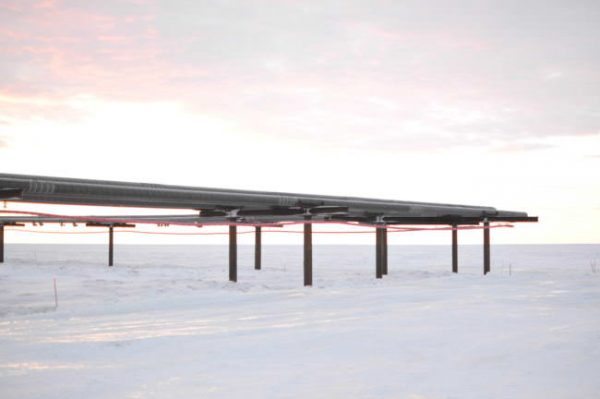
Oil prices fluctuate regularly. But right now, there is one consistent trend. Alaska oil is selling at a higher price than oil produced in the Lower 48. Why are the prices so different? Larry Persily, a former federal pipeline coordinator in Alaska, has an explanation.
PERSILY: Right now there’s a tremendous oversupply in the Lower 48 from all this shale production. The U.S. has hit a record. We are producing close to 12 million barrels of shale a day of total U.S. oil production. Two-thirds of that, eight million barrels, is coming out of shale oil. Which didn’t exist very much a decade ago. Anyway, so all that supply is more than the U.S. market needs.
To Alaska’s benefit, there’s no real good way to get all that oil out of the Bakken in North Dakota, the Permian in West Texas and New Mexico, shale production in Colorado. That oil in the mid-continent cannot find and does not find a cost-effective way to move to the West Coast. The West Coast refineries have a choice. They can buy Alaska oil or imported oil. So Alaska oil is being priced against the international benchmark, which is called brent. Which is about, these days, nine to ten dollars a barrel higher than U.S. WTI. So we’re just tagging along and doing better for it.
COLLINS: You point to a year when this started happening.
PERSILY: The 80s, 90s, 2000s, we were pretty closely tracking. We were 50 cents, a dollar, two dollars within the West Texas price. We got a little premium, but not that much. As shale oil production really started increasing and by 2012 it was clear it was really on the upswing, that spread started to widen. Instead of averaging a dollar or two dollars, it started spreading. And then by this fall, it hit ten bucks.
COLLINS: Is there a time limit on this?
PERSILY: Well I don’t see anyone building big pipelines through the Rockies to the West Coast. Canadian producers are trying to build pipelines from Alberta to get oil to the West Coast, to British Columbia. It’s possible if those tankers get built you could load a tanker in British Columbia and bring it to the West Coast. But I think realistically, the thing that may change the spread overtime, if the producers can alleviate the oversupply in the Lower 48 by exporting more, then that supply-and-demand will come in balance, U.S. prices will rise, reducing the bonus that Alaska gets.
COLLINS: Since I started this job, when I got here oil prices in general were pretty high, a couple months ago. And in the last few months I’ve seen them go down a few dollars at a time. Now we’re sort of hovering in the $50-$60 per barrel range. Is this just normal fluctuation or is there something driving that?
PERSILY: The absolute guarantees in life, right? Gravity is one. Oil prices are going to fluctuate. If I were to predict, I’d say long-term, Alaska prices are going to be in the $60 [range], Lower 48 in the $50 [range]. Probably not going to get back up into the [$70-$80 range] unless something happens in the world to change.
This interview is part of a new series addressing economic news and trends in Alaska. If you have question about the economy you’d like answered, email acollins@alaskapublic.org.




